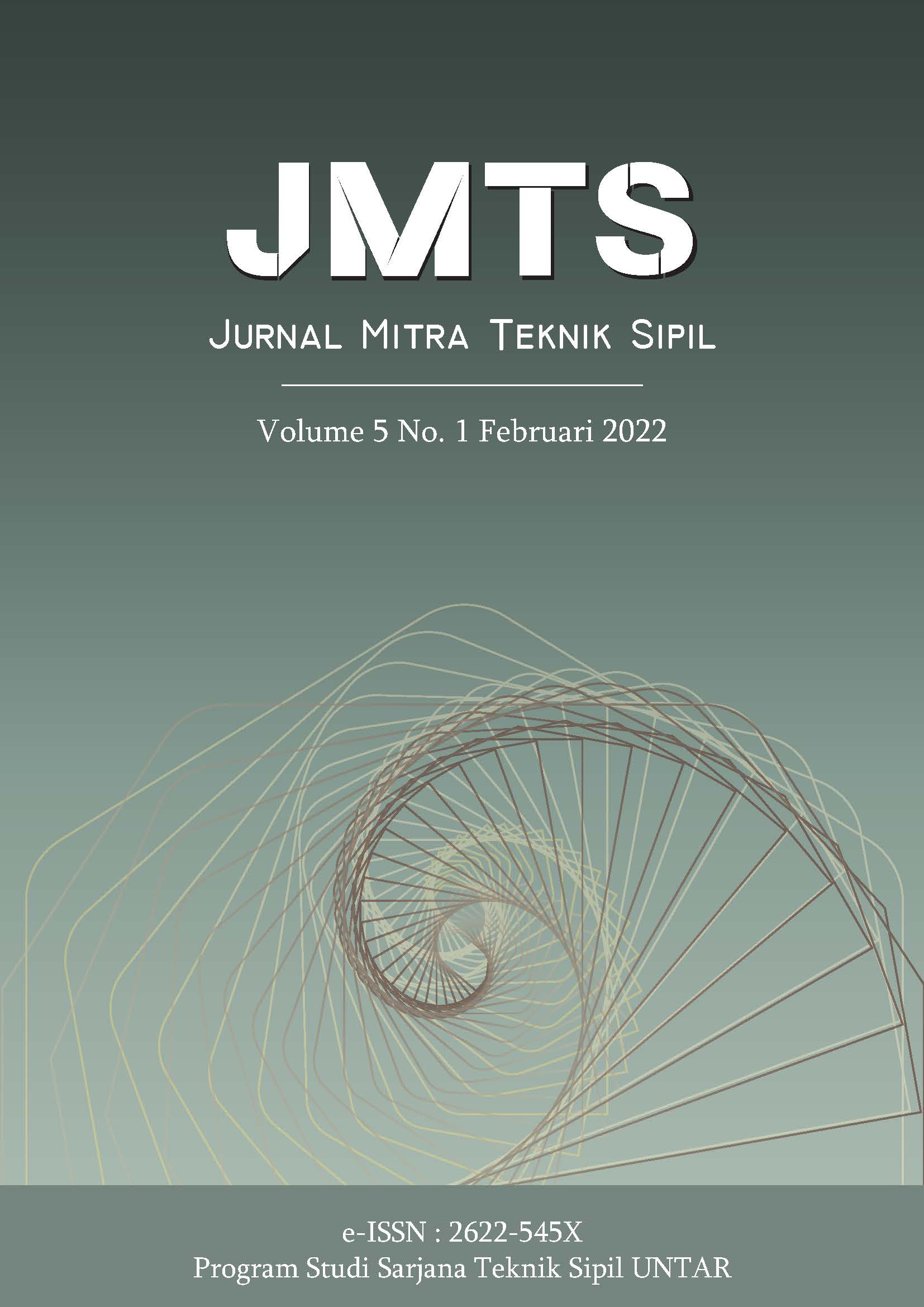CONCRETE DAMAGE ASSESSMENT THROUGH IMAGE PROCESSING WITH CANNY EDGE DETECTION METHOD
Main Article Content
Abstract
Concrete damage assessment for further action is very important for the safety of building strength before something unexpected happens. Therefore, an early assessment of a building that might seem alarming is very important. There are many methods that can be used to assess concrete damage, starting from the visual, use of tools, destructive and non-destructive test. As the rapid development of infrastructure, there is also an increase need to assess the damaged concrete. Not only new buildings, old buildings also need to be assessed to ensure the safety of these buildings, especially buildings affected by earthquakes, natural disasters, dirty environments and or others. The high need for assessors in these locations become a problem if the building is huge and will take time if done with a small workforce, technological assistance is the solution. Buildings affected by natural disasters causes various kinds of damage, starting from cracks, mold and stains on concrete blankets. This damage can interfere with the strength and safety of the building, so assessing damage to concrete is very important. Not all buildings that are damaged are safe to go to, let alone stepped on, so we need the help of technology, for example cameras or drones.
Article Details
References
Dharmawan W. I., Oktarina D., Safitri M., 2016. Perbandingan Nilai Kuat Tekan Beton Menggunakan Hammer Test dan Compression Testing Machine terhadap Beton Pasca Bakar. Jurnal Ilmu dan Terapan Bidang Teknik Sipil. Bandar Lampung.
Hutchinson T. C., Chen Z. Q., 2006. Improved Image Analysis for Evaluating Concrete Damage. Journal of Computing in Civil Engineering ASCE. University of Notre Dame. Indiana.
Jain K. K., Bhattacharjee B., 2012. Application of Fuzzy Concepts to the Visual Assessment of Deteriorating Reinforced Concrete Structures. Journal of Construction Engineering and Management ASCE. India
Madau D. P., Feldkamp L. A., 1996. Influence Value Defuzzification Method. Advanced Vehicle Technology. Michigan.
Naryono, Suharyadi I., 2012. Analisa Pengelasan Dingin dengan Menggunakan Metode High Frequency Electrical Resistance Welding pada Proses Pembuatan Pipa Baja SKTM 13B. Jakarta.
Pragalath H., Seshathiri S., Rathod H., Esakki B., Gupta R., 2018. Detoruiration Assessment of Infrastructure Using Fuzzy Logic and Image Processing Algorithm. ASCE. University of Manchester.
Sankarasrinivasan S., Balasubramanian E., Karthik K., Chandrasekar U., Gupta R., 2015. Health Monitoring of Civil Structures with Integrated UAV and Image Processing System. ELSEVIER.
Tirpude, N.P., Jain, K.K., and Bhattacharjee, B. (2014). “Decision model for repair prioritization of reinforced-concrete structures.” Journal of performance of Constructed Facilites, 28(2), April
Wedhanto S., 2015. Penggunaan Metode Ultrasonic Pulse Velocity Test Untuk Memperkirakan Kekuatan dan Keseragaman Mutu Beton K200 Secara Non Destruktif. Jurnal Bangunan. Malang.



